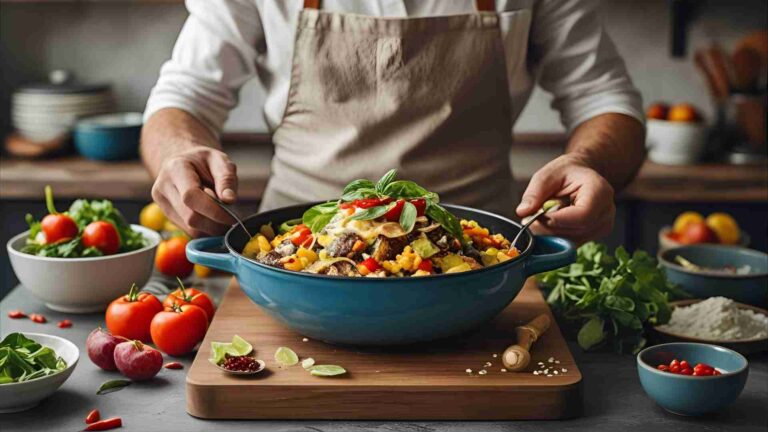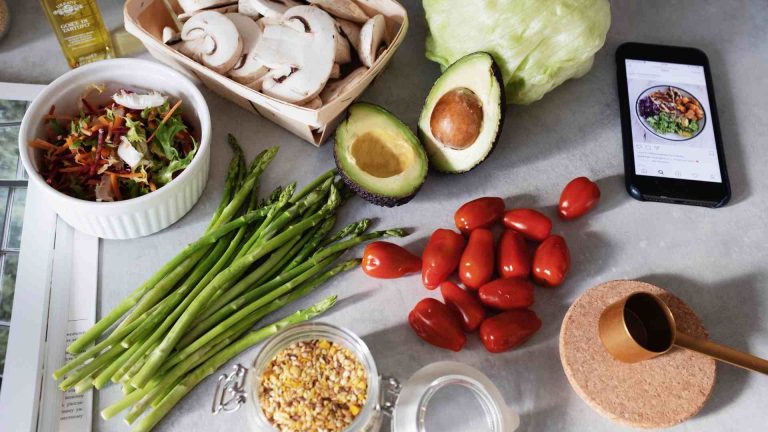Why WordPress is the Best Blogging Platform for Food Bloggers
Discover why WordPress is the ultimate platform for food blogging with unmatched customization, recipe plugins, SEO tools, and scalability.
Starting a food blog is an exciting venture for sharing recipes, culinary experiences, and building a community around food. However, choosing the right platform to host your blog is a critical decision that can shape its success. Among the many content management systems (CMS) available, WordPress.org stands out as the go-to choice for food bloggers. Its flexibility, robust features, and extensive ecosystem make it ideal for creating a visually appealing, functional, and scalable food blog. This article explores why WordPress is the best platform for food blogging, diving into its customization options, food-specific features, SEO capabilities, community support, and scalability, while comparing it to alternatives like Squarespace and Blogger.
The Power of WordPress: A Dominant Force in Website Creation
WordPress powers over 40% of the internet, a staggering statistic that highlights its widespread adoption. With billions of websites online, over 600 million rely on WordPress, including personal blogs, business sites, and large-scale publications. This dominance isn’t just a numbers game—it reflects WordPress’s reliability, versatility, and trust among users, from beginners to professional developers. For food bloggers, this means tapping into a proven platform with a wealth of resources and a massive community to support your journey.
Unlike other platforms, WordPress.org (distinct from WordPress.com) offers self-hosted freedom, giving you full control over your site’s design, functionality, and hosting environment. This flexibility is crucial for food bloggers who need tailored solutions to showcase recipes, engage readers, and monetize their content.
Unmatched Flexibility and Customization
One of WordPress’s greatest strengths is its open-source nature, meaning its code is publicly accessible and endlessly customizable. This allows food bloggers to craft a site that aligns perfectly with their brand and vision. Whether you’re aiming for a minimalist aesthetic or a vibrant, image-heavy layout, WordPress delivers.
Themes: The Foundation of Your Blog’s Look
WordPress offers thousands of themes, both free and premium, through its Theme Directory, as well as third-party marketplaces like StudioPress and ThemeForest. Food-specific themes, such as Foodie Pro by Feast Design, are designed with bloggers in mind, featuring layouts optimized for recipe displays, high-quality images, and user-friendly navigation. These themes often include built-in recipe archives, image galleries, and customizable widgets, allowing you to create a professional-looking site without coding expertise.
For example, Foodie Pro, a popular choice among food bloggers, offers a clean, modern design with recipe-focused features like integrated recipe cards and archive pages. Premium themes typically range from $30 to $100, with Foodie Pro priced at approximately $75, offering excellent value for its tailored functionality.
Full Control Over Design
Unlike drag-and-drop builders like Squarespace, which limit customization to predefined templates, WordPress allows you to modify every aspect of your site. With the right developer or even basic CSS knowledge, you can tweak fonts, colors, layouts, and more. This level of control ensures your food blog stands out, reflecting your unique style—whether it’s rustic, modern, or eclectic.
For advanced users, WordPress supports custom-coded themes, enabling bespoke designs that elevate your blog’s professionalism. While custom themes can cost $1,000-$5,000 depending on complexity, they’re an investment for bloggers aiming for a distinctive online presence.
Food-Specific Features for an Engaging Blog
Food blogs have unique needs: clear recipe presentation, stunning visuals, and user-friendly navigation. WordPress excels in meeting these demands through specialized plugins and themes.
Recipe Plugins: Enhancing User Experience
Plugins like WP Recipe Maker and Tasty Recipes are game-changers for food bloggers. These tools allow you to create professional recipe cards with structured data, making recipes easy to read, print, and share. Structured data also enhances SEO by enabling Google to display your recipes in rich snippets, such as recipe carousels or featured results.
- WP Recipe Maker: Offers customizable recipe cards, nutritional information integration, and schema markup. The premium version costs around $49/year.
- Tasty Recipes: Known for its user-friendly interface and frequent updates, priced at approximately $79/year. It integrates with tools like Nutrifox for nutritional data, enhancing reader value.
These plugins ensure your recipes are Google-friendly, printer-ready, and visually appealing, addressing a major limitation of platforms like Squarespace, which lack native recipe card functionality.
Visual Appeal with Image Galleries
Food blogs thrive on high-quality visuals, and WordPress themes often include built-in galleries to showcase your dishes. Plugins like Envira Gallery ($29-$99/year) allow you to create responsive, mobile-friendly image galleries that load quickly, ensuring a seamless user experience. This is critical for food blogs, where hunger-inducing photos drive engagement.
SEO Optimization: Getting Your Recipes Found
Search Engine Optimization (SEO) is vital for driving organic traffic to your food blog. WordPress’s SEO-friendly structure, combined with powerful plugins, makes it a standout choice.
Built-In SEO Features
WordPress’s clean code and customizable permalinks create an SEO-friendly foundation. You can optimize URLs, meta descriptions, and headings without needing advanced technical skills. For food bloggers, this means your recipes can rank higher for searches like “best keto bagels” or “vegan chocolate cake.”
SEO Plugins: Yoast vs. Rank Math
Plugins like Yoast SEO and Rank Math are essential for fine-tuning your content. Both offer features like keyword analysis, readability scores, and XML sitemap generation, but they have distinct strengths:
- Yoast SEO: A veteran in the SEO space, Yoast provides detailed feedback on content readability and keyword usage. The free version is robust, while the premium version ($99/year) adds advanced features like internal linking suggestions.
- Rank Math: A newer contender, Rank Math is praised for its lightweight design and speed. Its free version includes most features food bloggers need, with the pro version ($59/year) offering enhanced analytics.
Community feedback, such as from Reddit user SAINTJACQ, suggests Rank Math may be faster than Yoast, which can occasionally slow down sites. However, both are excellent choices, and testing them on your blog can help you decide which suits your needs.
Recipe Schema Markup
Recipe plugins like WP Recipe Maker and Tasty Recipes automatically implement schema markup, which helps search engines understand your content. This can lead to enhanced visibility in Google’s recipe carousels or rich results, driving more clicks to your blog.
| Feature | Yoast SEO | Rank Math |
|---|---|---|
| Free Version | Comprehensive | Extensive |
| Premium Price | $99/year | $59/year |
| Key Features | Readability analysis, internal linking | Lightweight, advanced analytics |
| Performance | Slightly heavier | Faster, leaner |
A Thriving Community and Extensive Support
WordPress’s massive community is a lifeline for bloggers. With millions of users, developers, and contributors, you’ll find endless tutorials, forums, and resources to troubleshoot issues or learn new skills. Platforms like the WordPress Support Forum, Reddit, and blogs like Pinch of Yum offer practical advice tailored to food bloggers.
Third-Party Ecosystem
The WordPress ecosystem includes over 50,000 plugins and thousands of themes, covering nearly every functionality imaginable. From e-commerce (WooCommerce) to email marketing (ConvertKit integration), you can add features as your blog grows. For example:
- WooCommerce: A free plugin for selling cookbooks, meal plans, or merchandise.
- ConvertKit: Seamlessly integrates with WordPress for email list building, with plans starting at $9/month.
This extensibility contrasts with platforms like Squarespace, where integrations are limited and often clunky.
Learning Resources
For beginners, WordPress’s learning curve is manageable. Most hosting providers, like SiteGround or Bluehost, offer one-click WordPress installation, simplifying setup. Courses like the WordPress Deep Dive from Pinch of Yum cover everything from creating posts to managing plugins, making it easier to master the platform.
Scalability: Growing Your Food Blog
WordPress is built to grow with your blog, whether you’re starting with a few recipes or aiming for a multi-author site with thousands of visitors. Its scalability is unmatched by simpler platforms like Blogger.
Handling Traffic and Content Growth
WordPress can manage high traffic volumes with the right hosting provider. Options like Agathon, SiteGround, or Bluehost offer reliable performance, with plans starting at $3-$15/month. Agathon, for instance, provides exceptional support and is recommended by food bloggers for its reliability, with a promotional $15 discount on the first month.
E-commerce and Monetization
As your blog grows, WordPress supports monetization through ads, sponsored posts, or product sales. Plugins like WooCommerce enable you to sell digital downloads (e.g., recipe eBooks) or physical products (e.g., kitchen tools). Integration with ad networks like Mediavine or AdThrive is seamless, allowing you to earn passive income.
| Hosting Provider | Starting Price | Key Features |
|---|---|---|
| Agathon | ~$15/month | Excellent support, reliable uptime |
| SiteGround | $3.99/month | One-click WordPress install, fast servers |
| Bluehost | $2.95/month | Affordable, beginner-friendly |
| HostGator | $2.75/month | Scalable plans, good for growth |
Comparing WordPress to Alternatives
While Squarespace and Blogger are popular alternatives, they fall short for food blogging. Squarespace’s drag-and-drop interface is user-friendly but lacks the customization and plugin support WordPress offers. Its templates are visually appealing but rigid, and it doesn’t support recipe cards or advanced SEO tools. Blogger, while free, is outdated and lacks the robust ecosystem needed for professional blogging.
Real Balanced’s migration from Squarespace to WordPress highlights these limitations. The blogger struggled with Squarespace’s lack of recipe card functionality and poor SEO performance, issues resolved by switching to WordPress.org with Tasty Recipes and Yoast SEO.
WordPress.com vs. WordPress.org
It’s worth clarifying the difference between WordPress.com and WordPress.org. WordPress.com is a hosted platform with limited customization, similar to Squarespace. WordPress.org, the self-hosted version, offers full control, making it the preferred choice for food bloggers. Hosting WordPress.org requires a separate provider, but the freedom to install plugins and themes makes it worthwhile.
Getting Started with WordPress
Starting a food blog on WordPress is straightforward:
- Choose a Domain and Hosting: Register a domain (e.g., through Namecheap, ~$10/year) and select a hosting provider like SiteGround or Bluehost.
- Install WordPress: Most hosts offer one-click installation.
- Select a Theme: Choose a food-focused theme like Foodie Pro or a free option from the WordPress Theme Directory.
-
Install Essential Plugins:
- Recipe plugin (e.g., Tasty Recipes, WP Recipe Maker)
- SEO plugin (e.g., Yoast or Rank Math)
- Image optimization (e.g., Smush, free)
- Create Content: Start publishing recipes, ensuring each post includes SEO-friendly keywords and schema markup.
- Build an Email List: Use ConvertKit or Mailchimp to engage readers.
Chart: WordPress Setup Workflow

Addressing the Learning Curve
WordPress has a slight learning curve compared to drag-and-drop builders, but its intuitive dashboard and wealth of tutorials make it accessible. Beginners can start with free themes and plugins, while advanced users can explore custom coding. Community feedback on platforms like Reddit emphasizes WordPress’s ease of use once you’re familiar with its interface, with users like paulsmith6193 praising its flexibility for niche blogs.
Potential Drawbacks and Mitigations
While WordPress is powerful, it’s not without challenges. The learning curve can be steep for absolute beginners, and poorly optimized plugins can slow down your site. However, these issues are manageable:
- Learning Curve: Use beginner-friendly hosts and take advantage of tutorials or courses.
- Performance: Choose lightweight plugins like Rank Math and optimize images with tools like Smush.
- Maintenance: Regular updates to WordPress, themes, and plugins ensure security and performance.
Why WordPress Wins for Food Blogging
WordPress’s combination of flexibility, food-specific features, SEO tools, community support, and scalability makes it the ultimate platform for food bloggers. Unlike Squarespace or Blogger, it offers the tools to create a professional, user-friendly, and search-optimized blog that grows with your ambitions. Whether you’re sharing family recipes or building a culinary empire, WordPress provides the foundation for success.
For food bloggers, investing in WordPress.org, a reliable host, and key plugins like Tasty Recipes and Yoast SEO is a recipe for a thriving online presence. Start today, customize your site, and watch your food blog flourish.
Please share these Why WordPress is the Best Blogging Platform for Food Bloggers with your friends and do a comment below about your feedback.
We will meet you on next article.
Until you can read, Hot Dog with Sauerkraut and Mustard Street Food






